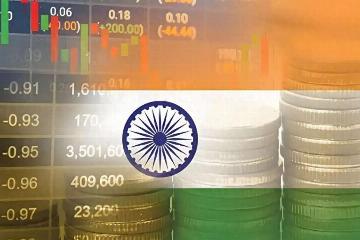Plunge of the Indian Rupee
Advertisements
The Mighty Dollar's Impact
The recent surge of the US dollar has sent ripples of anxiety across various economies worldwide, particularly in developing nationsWhile countries were scrambling to sell off US Treasury bonds to stave off currency depreciation, the Indian rupee was the first to falter under the dollar's pressureWitnessing a rapid decline, the rupee skated downwards like a skater who bit the dust, tumbling to depths not seen since 1983. Without some grit, the rupee might have faced a catastrophe reminiscent of a 'soul-crushing plunge.'
However, India did not sit on its handsIn a decisive move, it unleashed a whopping $50 billion from its foreign exchange reserves to prop up its currencyAfter all, the term 'collapse' could hardly be part of Prime Minister Modi's aspirational checklistThis injection of capital temporarily stabilized the rupee, although it led to a drop in India’s foreign reserves to $657.9 billion.
Now, you might wonder why India isn't following in the footsteps of giants like China and Japan, who are known for their significant holdings in US Treasury bonds
Advertisements
These nations deftly utilize those bonds as a means to obtain liquidity during crisesIn contrast, India opted to use its own dollar reserves, and this decision isn't devoid of rationale.
To understand India’s choice, it’s crucial to consider its economic landscapeDespite the perceived image of India as the 'star of emerging economies,' the reality is starkly different due to its significant trade deficit, which ballooned to $238.9 billion last yearThe vibrant narrative of India’s trade is somewhat misleading; beneath the cloud of export success lies a consistent pattern of operating at a lossRelying on US debt to rescue the rupee overlooks the fragility of these reservesMoreover, India's infrastructure and manufacturing sectors are lackingSuch deficiencies make it particularly difficult to leverage foreign trade advantages to inject liquidity.
In stark contrast to countries like China, whose manufacturing exports facilitate a trade surplus, India's main asset appears to be oil trading
Advertisements
By importing petroleum from Russia and reselling it elsewhere, India profits from these middleman practicesWhile this trade strategy may be lucrative, it also highlights a precarious economic structure, with manufacturing lagging far behindApart from a robust pharmaceutical sector and a few labor-intensive industries, India’s competitive prowess is limited.
India’s use of foreign exchange reserves to stabilize its currency can be likened to taking a shot of adrenaline—it may provide a temporary fix but is not sustainable in the long runThe critical question is whether this method can withstand a protracted period of financial strainIndia’s reserves are not limitless; a continuous dipping into them risks depleting its financial arsenalWith an increasing dollar index putting added pressure on the rupee, the challenge may soon escalate, leading to scenarios with no good options.
Moreover, this artificial support mechanism does little to stimulate the underlying economic development necessary for long-term growth
Advertisements
India’s infrastructure woes present significant challenges for manufacturing upgradesReports and cinematic portrayals of overcrowded trains speak volumes about the deficiencies in transport links which are vital for manufacturing growth—this is a manifestation of daily reality, rather than hyperboleGiven such circumstances, pursuing manufacturing growth feels nearly impossible.
Attracting foreign investment presents another conundrum altogetherMany companies arrive in India with high hopes of replicating China’s successful development trajectory, driven by cheap laborUpon arrival, however, they discover that Indian workers’ work ethic does not align with their expectations, creating gaps in productivityCoupled with a lack of systemic policies and strategic planning from the Indian government, many investors have opted to redirect their efforts towards neighboring Vietnam, leaving India in the dust.
Currently, India's strategies seem to be merely treating symptoms rather than addressing the root of its economic issues
- Transaction Banks Tap Platform Strategy for Growth
- Stocks on Brink? Fed Rate Hike Debate Heats Up
- Strong Demand for Global Electric Vehicle Market
- Treasury Yields Hit New Low Amid Wealth Shift
- Crossroads of Wealth: Where Do You Stand?
To escape this cyclical crisis, India must summon the courage to overhaul its infrastructure and enhance the manufacturing capabilities, rather than relying on foreign reserves or resorting to trading as a 'middleman'—these are only short-term tactics.
India’s economic trajectory now hinges significantly on its ability to endure the ever-increasing pressures from a bullish dollar indexShould the dollar continue its ascent, the burgeoning costs of domestic financing could spiral into a recession, revealing vulnerabilities across the economyOnce such cycles of decline begin, a mere diversion of foreign reserves into dollar sales is unlikely to serve as an adequate remedy.
Ultimately, if the dollar continues its upward trend, can India persist in weathering the storm with its dwindling forex reserves? Will it, against all odds, conjure an 'Indian miracle' akin to the narratives spun in films? The questions linger on, and the answers might define the future of not just the rupee, but India's broader economic narrative.
